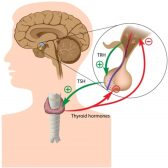Definition
noun, plural: cephalochordates
Any of the small, elongated, segmented, fish-like chordates that belong to the subphylum Cephalochordata, such as lancelets
Supplement
Chordates are primarily characterized by having a notochord, dorsal hollow nerve cord, muscular post anal tail, and pharyngeal slits for at least some period of the life cycle of an animal. The phylum Chordata has three subphyla: Vertebrata (vertebrates), Tunicata (tunicates), and Cephalochordata (cephalochordates).
As a chordate, the cephalochordates possess a notochord. However, their notochord (as well as the dorsal nerve cord, endostyle, pharynx, and post-anal tail) persists till adulthood. Their notochord extends from head to tail. The cephalochordates are small and lack any hard parts. The lancelets (of about 32 species) serve as the modern representatives of this subphylum.
Other species belonging to the subphylum are already extinct. For instance, Pikaia gracilens species were recovered from the Burgess Shale (i.e. a fossil-bearing deposit located in the Canadian Rockies of British Columbia, Canada). They look similar to the lancelet and probably swam like the eels. Cathaymyrus species were found from the Chengjiang County, Yuman Province in China. They possessed an elongated, segmented body but without distinctive head.
Word origin: Ancient Greek kephalḗ (“head”) + chordata
Scientific classification:
- Kingdom: Animalia
- Phylum: Chordata
- Subphylum: Cephalochordata (Haeckel, 1866)
See also:
- chordate
- lancelet







